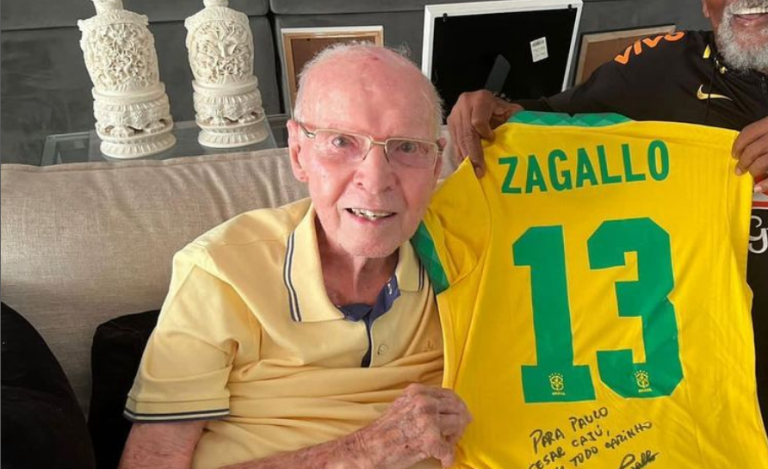Mário Jorge Lobo Zagallo is feeling better, even though the legendary Brazilian is not yet cleared to leave the Barra d’Or hospital in Rio de Janeiro. His family has been using social media to keep updates on the Velho Lobo condition.
“Our Zagallo is still hospitalized at the Barra d’Or hospital for the treatment of a urinary infection, with evidence of significant clinical and laboratory improvement, lucid, breathing without the aid of equipment, still without a forecast for hospital discharge,” they informed this Monday (21).
READ MORE
++ How did a former mason become a professional footballer and achieve success in China?
++ Who is the Panamanian player who stands out in the youth categories of a traditional team from São Paulo?
++ Before Payet: Seedorf, Petkovic and other European players who shone in Brazil
World Cup history
Altogether, Zagallo was active in seven World Cups. In 1958 and 1962, he was one of the main players of Brazil’s road to win the two titles. In the first of them, he even scored a goal in the final match against the host team, Sweden, which lost by 5-2.
In 1962, he shared with Pelé the artillery of the debut game – a 2-0 victory over Mexico, in Viña del Mar, Chile. And he continued as a starter until the final, against Czechoslovakia (3 to 1).
Years later, in 1970, still young, Zagallo led the national team from the edge of the field in what would be the most emblematic Cup of all time, thanks to the football-art exhibited by the team that brought together Pelé, Tostão, Gerson, Rivellino, Jairzinho, Piazza, Clodoaldo, Carlos Alberto Torres, Brito, Everaldo and Félix, among other stars.
Zagallo would gain more respect and notoriety there, which led him to remain in the national team for the 1974 World Cup in Germany. However, he couldn’t manage to help the team in the tournament, as Brazil did not advance from the semifinal, after being beaten by the Netherlands by 2-0.
Summoned by Carlos Alberto Parreira to help him as one of the coaching staff members at the US World Cup in 1994, Zagallo would take another Olympic turn and become the first four-time world champion.
The feat of having lifted the FIFA World Cup four times would take him to another tournament, 1998, in France. Again as a coach, he achieved the feat of advancing to another final, in which Brazil would end up surpassed by Zidane’s team.
Finally, in the 2006 World Cup, again as coaching staff member, alongside Parreira, he saw the national team leave the competition in the quarterfinals, once again against the French.



